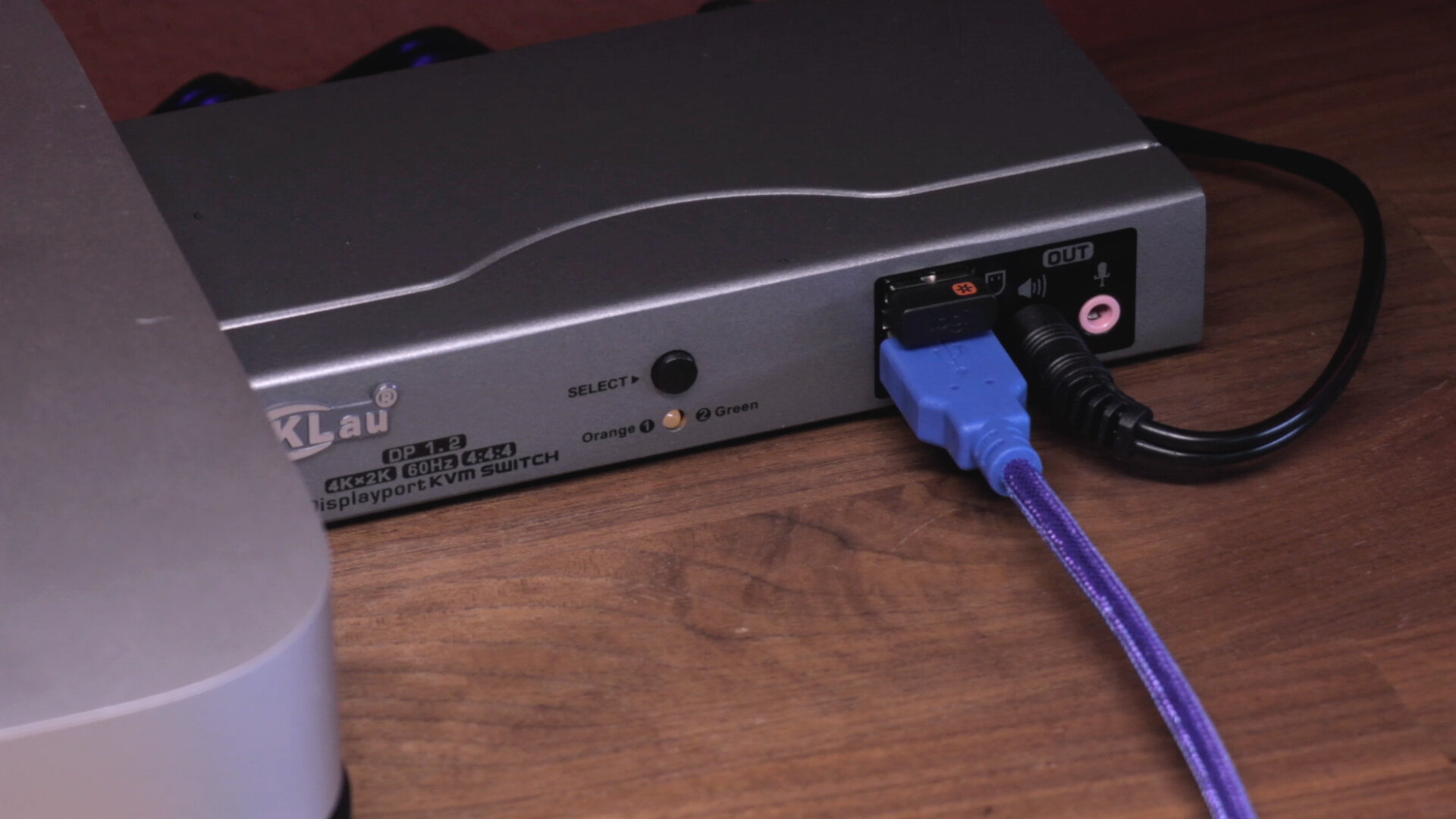CKLau KVM Switcher Review: What A Game Changer!
Purchase Price: $69.99
We are a participant in the Amazon Services LLC Associates Program, an affiliate advertising program designed to provide a means for us to earn fees and support our channel by linking to Amazon.com and affiliated sites.
Let’s say you have a work computer and a play computer and you wanted to use the same computer accessories with both systems simultaneously. How would you do it? Sure you can purchase a bluetooth mouse and keyboard that can pair and switch between different platforms, but what about the speakers or the monitor? I’ve come across these scenarios a few times over the years and a port switcher has always been the best solution. After reconfiguring some of my setup last month and consolidating two setups onto one desk, I found what may very well be the best Displayport switch I’ve come across on Amazon. This is the CKLau 2 Port KVM switch that basically does everything you need a switcher to do without breaking the bank.
What can it do?
At only $69.99 at the time of purchase, this switcher was one of the only ones on Amazon that had audio and microphone support. This means that you could plug in your speakers and use them for both computers. This was a huge deciding factor for me as I wanted to use my JBL reference speakers with both my Mac Mini and my Cyberpower PC. Your accessories are all plugged in on the front side of the switcher. On the 2 port model I have, there are two USB-A ports for a keyboard and a mouse alongside microphone and speaker slots.
The back of the device is where all the chaos comes from. I say chaos as it does seem a little daunting at first, but once you get a grasp for the purpose of each section, it basically sets itself up. Segmented into three sections, the KVM switch has an On/Off toggle next to the DC5V power plug. There’s also a slot for an optional wired remote to plug in here as well. The DP Out port is where this switcher connects to the monitor that both computers will be using to display on. CKLau supplies all the cables required to get the system hooked up, including these USB slots that plug into each respective computer. Once those are plugged into their computers, the KVM switch will be recognized as an accessory extension. This is how the mouse and keyboard are connected to each computer. The same applies to the DisplayPort plugs. Once there is a link between the KVM and their respective computers through the DisplayPort, the switcher can push up to a 4K resolution at 60 hz refresh to accompanying monitors. I actually don’t have a 4K monitor setup and I don’t use this switcher with a monitor. I’ll explain why next.


Two for One
Using two computers with the same accessories
As I said in the intro, my main purpose in purchasing the KVM was to allow for the ability to share a single speaker system on two computers. You’d be surprised how difficult it is to accomplish something like this even for someone with decent tech knowledge. I’ve used multiple USB switchers in the past and they always only supplied USB ports and HDMI ports to work with. The reason I’m not using the KVM with a monitor is because I want to view two monitors concurrently. Oftentimes I’ll have a video timeline or an audio timeline I’m editing with my Mac Mini. During rendering or exporting downtime, I wanted to direct my attention to my gaming PC without losing sight of my work. If I were to utilize only one monitor, the KVM would jump between the two computers, never showing both at the same time. This particular switcher also doesn’t have monitor daisy chaining capabilities.
More Useful than it looks
The KVM does a surprisingly terrific job doing what it’s intended to do. Press the select button on the front and the switcher instantly does the job. A green and orange light distinguishes which computer you’re currently connected with. However, it unfortunately shares a common problem all USB switchers have. With all these cables compiled in such a cramped vicinity over one another, static interference causes a humming sound to emit from the speakers. I’ve heard this before on my other switchers and it’s usually caused by RGB keyboards. If the RGB is turned off, the humming goes away. That’s something that I have yet to find a better solution to other than turning the RGB off.
Another surprising thing about the KVM is the build quality of this Chinese made product. It’s a metal body that feels sturdy and non-intruding. Unlike a lot of the cheap plastic switchers on Amazon, I don’t have any doubts that the KVM will last a while. I’m quite satisfied with the speed of which the KVM operates at and other than the static interference humming, this is the exact product I was hoping to receive. It’s very rare that something does the job exactly as you wanted it to. This is one of those products and well worth the money I paid to do that one job.












Alex
With nearly a decade under his belt running his video production team, and countless hours traveling the country to report on pop culture events during his tenure as a contributor for AXS Examiner, Alex has relied on a lot of gadgets over the years. That still hasn’t satiated his need to get his hands on the newest and greatest the world has to offer!